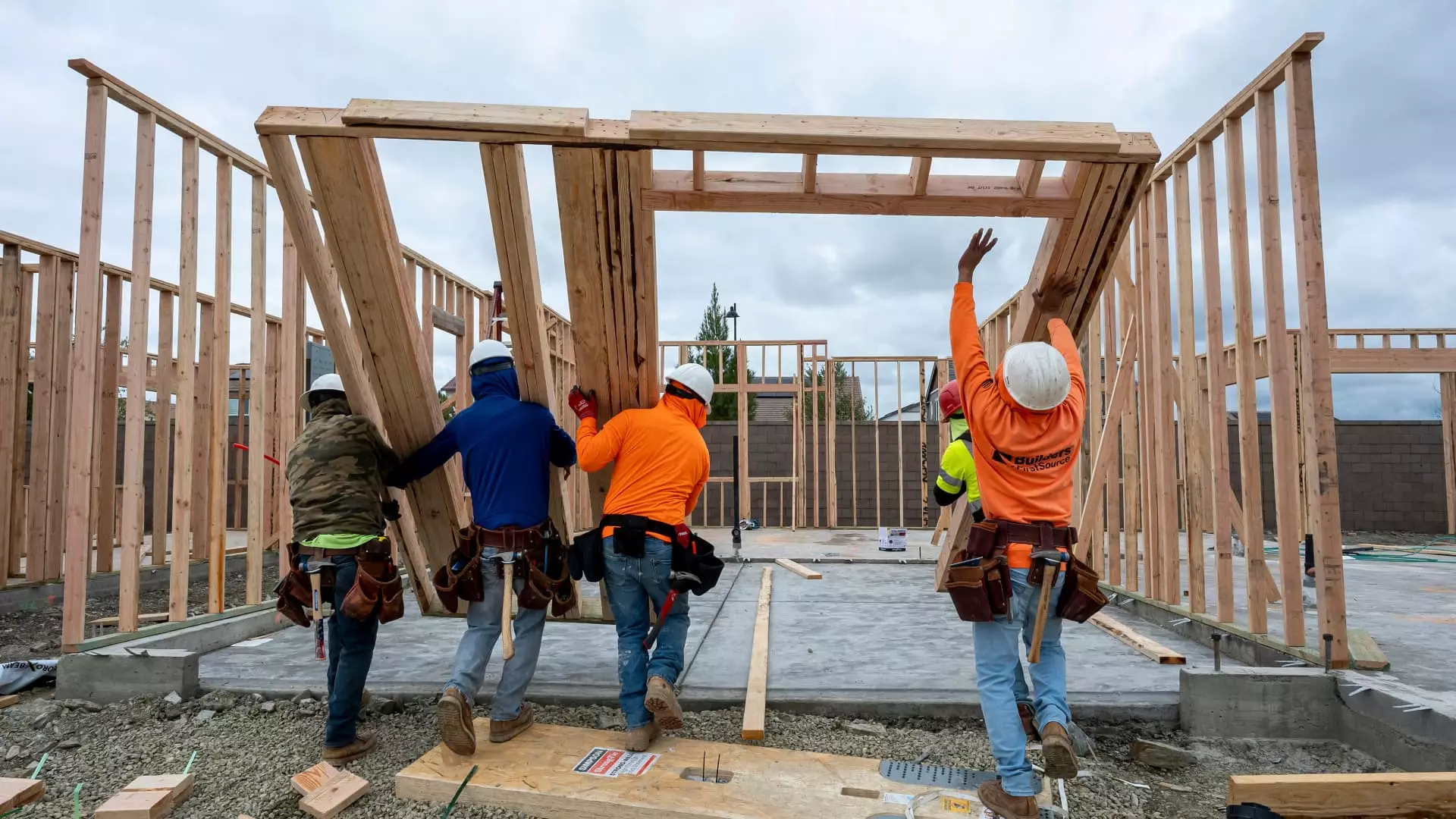As rising mortgage rates hover over the housing market like a storm cloud, homebuilders find themselves grappling with a palpable sense of decline. The National Association of Home Builders (NAHB) recently indicated that builder sentiment plummeted to an alarming 32 in June, a drop that underscores the escalating anxiety permeating this sector. It’s a stark reminder that in an economy fraught with unpredictability, the housing market is often one of the first victims. Historically, figures below 50 signal troubling times, and the singular drop to 32 indicates that builders have been overwhelmed by rising costs and wavering consumer interests—a point of no return.
The anticipated rebound that analysts had hoped for, spurred by tariff negotiations and a supposed easing on the part of the Trump administration, failed to materialize. Instead, we are left with a sobering situation reflecting a reality that homebuilders haven’t faced since December 2022 or the immediate aftermath of the pandemic in April 2020. This tells us that the housing market cycle is struggling not only with the current mortgage environment but also with lingering economic sentiments that suggest a more extended period of stagnation may be upon us.
Desperation Breeds Price Cuts
In the world of homebuilding, desperate times call for desperate measures. With a staggering 37% of builders reporting they have slashed prices—marking the highest figure since this metric began tracking three years ago—it’s evident that the industry is grappling for solutions. The average price cut of 5% has remained static, but it speaks volumes when you consider that it’s a calculated effort to lure hesitant buyers back into the market. It’s a worrying trend when builders resort to price reductions; it indicates that the homes they built with hope and ambition now carry the weight of excessive inventory.
Builder sentiment seems most fragile in the South and West regions, where construction is the most prolific. These are not merely local trends but reflections of broader economic currents affecting consumer confidence. The reality is that many potential buyers are lingering on the sidelines, holding back due to inflated mortgage rates and unclear economic forecasts, creating a chilling effect on the market.
Forecasting Trouble Ahead
As Robert Dietz, chief economist at the NAHB, has predicted, a decrease in single-family housing starts for 2025 is forthcoming. This sentiment isn’t just a short-term snapshot; it paints a long-term picture of an industry bogged down by expectations that continue to fail to meet reality. The idea that builders can actively stimulate demand through price cuts is becoming increasingly complicated amidst rising mortgage rates and economic fragility. Furthermore, better inventory levels signal that homes are available, but are consumers truly in a position to buy or are they simply waiting for better conditions?
Even major players in the market, such as Lennar, have succumbed to the pressure. Reporting an alarming drop of nearly 9% in average home prices from the previous year, the company’s subpar guidance on new orders and deliveries further underscores the industry’s turbulent state. Co-CEO Stuart Miller’s acknowledgment of the tightrope walk—balancing volume with incentives for sales—reveals the difficult choices builders are forced to make in an attempt to maintain some semblance of stability.
The Uneasy Future for Homebuyers
What this means for prospective homebuyers is an unsettling reality. The market may appear more accessible due to price cuts, but the fundamental issues of affordability still loom large. The interplay of higher mortgage rates with perceived value creates a skewed landscape where homeownership feels increasingly out of reach for many individuals.
For those of us who stand in favor of a more center-left liberal ideology, advocating for better mortgages and affordable housing options isn’t just a policy matter; it’s a moral imperative. The very nature of the American Dream is tattered when buying a home—a staple of economic stability—is placed further from reach for countless families. It leads us to question our economic systems and prioritize policies that genuinely address affordability while injecting healthy competition back into the housing market.
The current state of affairs in homebuilding is nothing short of concerning. Without collective action taken on political and economic fronts, this crisis may deepen, leaving an entire generation of potential homeowners at the mercy of rising rates and stagnation. The specter of buyer hesitance looms large as we assess what the future holds for the housing market and the many dreams it holds within its walls.


Leave a Reply